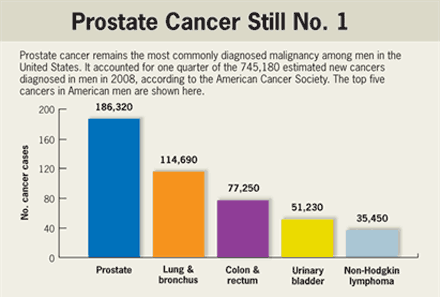Dogs can sniff out prostate cancer in urine
Highly-trained dogs are able to detect prostate cancer in urine with 98 percent accuracy, according to a study presented May 18 at the annual meeting of the American Urological Association in Orlando.
“This study gives us a standardized method of diagnosis that is reproducible, low cost and non-invasive,” said lead author Dr. Gianluigi Taverna, chief of the prostatic diseases unit at the Humanitas Research Hospital in Milan, Italy.
“Using dogs to recognize prostate cancer might help reduce the number of unnecessary biopsies and better pinpoint patients at high risk for the disease,” he told Reuters Health in an email.
Researchers in Italy enrolled 902 participants and divided them into two main groups: 362 men with prostate cancer, ranging from very-low risk tumors to metastatic disease, and a control group made up of 540 men and women in generally good health or affected by other types of cancer or non-tumor related diseases. All participants provided urine samples.
Two 3-year old, female German Shepherds named Zoe and Liu were trained for about five months at the Italian Ministry of Defense’s Military Veterinary Center in Grosseto using the positive reinforcement “clicker method” and “imprinting,” during which the dogs learn to distinguish certain distinctive scents.
Both Zoe and Liu had previously worked as explosive-detection dogs.
 During the training, 200 urine samples from the prostate cancer group and 230 samples from the control group were analyzed. The dogs were taught to recognize prostate cancer-specific volatile organic compounds (VOCs) in the samples.
During the training, 200 urine samples from the prostate cancer group and 230 samples from the control group were analyzed. The dogs were taught to recognize prostate cancer-specific volatile organic compounds (VOCs) in the samples.
New urine samples were provided for the evaluation phase.
The dogs were instructed to sit in front of each sample where they detected the prostate cancer VOC. None of the team members knew which samples were which, except the chief medical veterinary surgeon, who observed from outside the room. The dogs were rewarded when correct identifications were verified.
Dog 1 achieved 100 percent accuracy in detecting samples from prostate cancer patients and 98 percent accuracy in eliminating samples that did not come from a prostate cancer patient.
Dog 2 was close, with 98.6 percent accuracy in detecting prostate cancer and 96.4 percent accuracy in eliminating those that didn’t have the disease.
Overall, the dogs had 16 false positives and four false negatives.
Though the high accuracy displayed by the dogs is encouraging, they are not about to replace human doctors, Taverna pointed out. Plenty of other information, like tumor stage and size, and the age of the patient - none of which the dogs can detect – go into determining treatment, he noted.
Dog-detection is a technique that “needs to be combined with other, common diagnostic tools (PSA, biopsy, MRI, etc.),” Taverna said
Dr. J. Kellogg Parsons, a surgeon at the University of California-San Diego’s Moores Comprehensive Cancer Center, considers the findings “provocative.”
 However, he told Reuters Health, “The results need to be validated in different patient populations and using different dogs. If the results can be replicated, then we need to zero in on the biological or chemical factor(s) that are at play.”
However, he told Reuters Health, “The results need to be validated in different patient populations and using different dogs. If the results can be replicated, then we need to zero in on the biological or chemical factor(s) that are at play.”
“Our ability to use dogs in a clinical setting to detect cancer is limited,” he added. “Therefore, we need to determine what biomarkers are being picked up here.”
Taverna said his team hopes to pinpoint exactly what the dogs are picking up on. “We want to expand on our current study by converting the chemicals detected by the dogs into gas chromatography-mass spectrometry so the process can be duplicated by machine. “
While humans have roughly five million olfactory cells (receptors that detect different odors) in their noses, dogs have about 200 million. For years, law enforcement and the military have used dogs to help locate bombs, drugs and missing people.
Recent studies have shown that dogs can also alert people to epileptic and diabetic seizures (the latter reportedly through the smell of breath or sweat).
Researchers have also been testing dogs’ ability to detect melanoma, as well as breast, lung, bladder and ovarian cancer. One study showed that dogs could detect ovarian cancer in tissue and blood samples; another focused on VOCs in urine for detecting bladder cancer.
Dr. Taverna’s research is building on an earlier study conducted in 2010 that demonstrated a dog’s ability to sniff out prostate cancer; however that study was relatively small with just 33 patients.
###
By Bridgett Novak